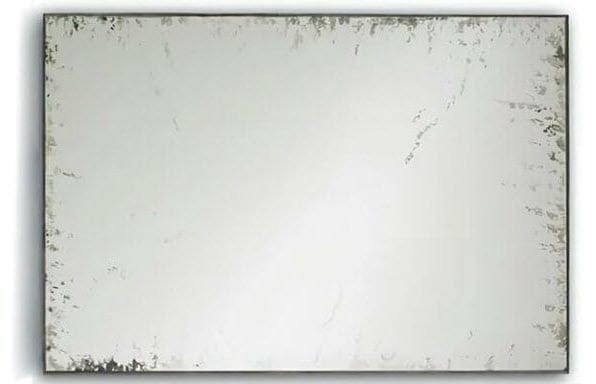How to Repair Mirror Desilvering: DIY Tips and Long-Term Solutions
Have you noticed dark, unsightly black edges creeping in along the border of your bathroom mirror? That’s a common issue known as mirror desilvering, and it can take a sleek, polished mirror and make it look old and worn out.
At MirrorChic, we specialize in enhancing the beauty of mirrors while extending their life—and we’ve heard the question hundreds of times: “Can I repair mirror desilvering?” The short answer is yes, but the method you choose depends on the extent of the damage, your budget, and how much time you want to invest.
Let’s explore what causes mirror desilvering, how to fix it, and the best way to protect your mirror for years to come.
What Causes Mirror Desilvering?
Mirror desilvering happens when the reflective coating (usually a layer of silver or aluminum) on the back of the mirror begins to break down or separate from the glass. This usually starts at the edges and creeps inward over time.
Common causes include:
- Moisture & humidity – especially in bathrooms
- Cleaning chemicals that seep behind the glass
- Age & wear of the mirror’s backing
- Improper installation that leaves edges exposed

DIY Fixes for Small Desilvered Areas
While mirror desilvering isn’t usually reversible, there are a few tricks that can help hide or minimize the appearance of those blackened edges.
1. Mirror Edge Framing
This is by far the most effective and attractive way to handle desilvering—and it’s what we specialize in at MirrorChic.
By installing a custom mirror frame, you cover the desilvered edges completely, giving your mirror a fresh, stylish upgrade without the need to replace it. Our frames are moisture-resistant, easy to install, and come in dozens of styles and finishes to match your décor.
Pro Tip: Framing your mirror doesn’t just hide flaws—it enhances your entire bathroom aesthetic.
2. Mirror Strips or Decorative Trim
You can also use adhesive-backed mirror strips or vinyl trim to cover affected edges. These can be found at hardware stores, but may not match your mirror perfectly or provide the same finished look as a custom frame.
3. Touch-Up with Mirror Paint (Temporary Fix)
Some DIYers try using chrome spray paint or silver nail polish on the back of the mirror. While this might work for tiny spots, it’s usually not a long-lasting solution and often leaves a visible mark or uneven finish.

Can You Re-silver a Mirror?
Technically, yes—re-silvering a mirror is possible, but it’s a time-consuming and often expensive process that involves:
This is best left to professionals and only worth considering for antique or sentimental mirrors. For most homeowners, replacing or framing the mirror is a more practical solution.
Preventing Mirror Desilvering in the Future
Whether you’re repairing a current mirror or installing a new one, prevention is key. Here’s how to extend your mirror’s life:
Final Thoughts: Repair or Replace?
If your mirror is showing early signs of desilvering, don’t rush to throw it out! A simple, stylish MirrorChic frame can conceal the damage and give your mirror a second life at a fraction of the cost of replacement.
Ready to repair your mirror the smart way? Browse our collection of custom mirror frames and see how easy it is to transform your mirror from worn-out to wow-worthy.
Need help choosing a frame or have questions about installation? Contact the team at MirrorChic—we’re always happy to help you make the best choice for your home.
